Recent Publications

Limor Meoded Danon: Opportunities and challenges with the German act for the protection of children with variations of sex development (Int J Impot Res . )
In May 2021, the German parliament passed a long-debated law to protect children with variations of sex development/sex characteristics from medically unnecessary surgeries until they are old enough to decide for themselves. This law joins similar laws passed in other countries in recent years and recognizes the rights of people with variations of sex development to self-determination and bodily autonomy. In this article, we discuss the notion of bodily autonomy and examine details of the German legislation in the context of psychosocial care. We focus on the following questions: (1) How may the law help to preserve the genital integrity and future bodily autonomy of newborns with variations of sex development (VSD)? (2) What are the opportunities and challenges of this law? (3) What strategies are needed to implement the law in ways that include medical professionals' knowledge and skills, parental cooperation, and protection for the genital integrity as well as the future genital autonomy of newborns with VSD?

Chovav Handler: High rates of recurrence of gallstone associated episodes following acute cholecystitis during long term follow-up: a retrospective comparative study of patients who did not receive surgery (Eur J Trauma Emerg Surg . )
Patients who are admitted with acute cholecystitis (AC) and do not undergo urgent cholecystectomy, are usually referred for interval cholecystectomy. Many do not have surgery for various reasons, and some of those do not suffer from any recurrent symptoms. The primary objective of this study was to assess the rate and nature of recurrent gallstone-related events in this population over a long period, and its association with demographic and clinical parameters. A secondary objective was to assess the reasons for not undergoing surgery.

David Karasik: Both indirect maternal and direct fetal genetic effects reflect the observational relationship between higher birth weight and lower adult bone mass (BMC Med .)
Birth weight is considered not only to undermine future growth, but also to induce lifelong diseases; the aim of this study is to explore the relationship between birth weight and adult bone mass.
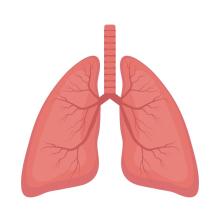
Ory Wiesel: Thoracic surgery in Israel (J Thorac Dis . )
During the past 74 years since its establishment, Israel has evolved into a modernized country with well-established and effective public health care system. Thoracic surgeons in Israel play a central role in the diagnosis and treatment of patients with diseases of the chest wall, diaphragm, mediastinum, airways, Lung, and esophagus as well are taking part in designated trauma teams....

Ory Wiesel: Perspective and practice patterns of mediastinal staging among thoracic surgeons (J Thorac Dis . )
Accurate mediastinal staging of lung cancer patients is critical for determining appropriate treatment. Mediastinoscopy and endobronchial ultrasound (EBUS)-guided transbronchial needle aspiration are the most commonly utilized techniques. Limited data exist on training and practice trends among thoracic surgeons. We aimed to determine training and practice patterns and find whether there is a paradigm shift in mediastinal staging after the introduction of EBUS into practice among thoracic surgeons in the United States.
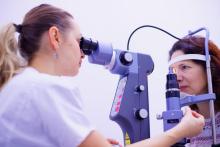
Haneen Jabaly-Habib: Ocular manifestations in systemic diseases (Harefuah .)
Uveitis and neuro-ophthalmic manifestations may indicate an underlying systemic and/or neurologic condition. A systematic approach to patients in the form of comprehensive anamnesis and thorough ocular and physical examination helps to reveal an undiagnosed condition or an evolving illness. Prompt diagnosis is of utmost importance in such cases because of potential sight-threatening and life-threatening nature of such conditions. Both subspecialties of neuro-ophthalmology and uveitis require, in many instances, a multidisciplinary approach, as emphasized in this special issue.

Khalaf Kridin: Atypical clinical manifestation and protracted latency are observed in the emerging variant of checkpoint inhibitor-associated bullous pemphigoid (Br J Dermatol . )
The last two decades have witnessed a substantial increase in the incidence of bullous pemphigoid (BP) worldwide. One of the most compelling interpretations accounting for this epidemiological observation is the growing exposure to novel drug classes that might be implicated in eliciting the disease. Multiple lines of evidence have recently accumulated to suggest that exposure to dipeptidyl peptidase 4 (DPP4) inhibitors and checkpoint inhibitors (CPIs) is associated with an elevated risk of BP. As these drugs were introduced only in the past two decades, their rising utilization underlies, at least in part, the growing incidence of BP.

Doron Sagi, Mary Catharine Joy Rudolf, Sivan Spitzer: A social ecological approach to promote learning health disparities in the clinical years: impact of a home-visiting educational program for medical students (BMC Med Educ . )
There is consensus that medical schools have a duty to educate students about social determinants of health (SDOH) and equip them with skills required to ameliorate health disparities. Although the National Academy of Medicine (NAM) urged the development of experiential long term programs, teaching is usually conducted in the pre-clinical years or as voluntary courses. ETGAR a required health disparities course, based on the social ecological model, was initiated to answer the NAM call. This study aimed to ascertain the course impact on students learning of SDOH and health disparities.

Noa Martonovich, Maher Khatib, Michael Assaf: Hair tourniquet syndrome: A retrospective study (Pediatr Dermatol .)
Hair thread tourniquet syndrome (HTS) is a pediatric condition in which human hair or synthetic fiber encircles and strangulates a body appendage causing tissue necrosis. Few epidemiologic studies have been done. Our objective was to better define the demographics, clinical features, and predisposing factors for this condition.
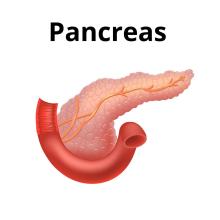
Amir Mari, Wisam Sbeit, Tawfik Khoury: Bloating, Diarrhoea and Maldigestion in Patients with Metabolic Syndrome: Are Fatty Pancreas and Pancreatic Exocrine Insufficiency the Missing Pieces of the Puzzle? (J Clin Med .)
Pancreatic exocrine insufficiency (PEI) is a disorder causing symptoms such as maldigestion, malnutrition, diarrhoea, bloating, vitamin deficiency and weight loss [...].

Shemy Carasso: Urgent Transcatheter Edge-to-Edge Repair for Severe Mitral Regurgitation in Patients with Refractory Cardiogenic Shock (J Clin Med . )
Patients suffering from cardiogenic shock (CS) and mitral regurgitation (MR) demonstrate worse prognosis, with higher mortality rates. We sought to evaluate the effectiveness of urgent valve intervention of the mitral valve, using transcatheter edge-to-edge repair (TEER) procedures in patients presenting with CS in a tertiary Intensive Coronary Care Unit (ICCU).
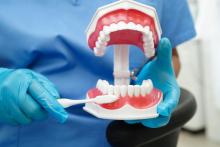
Yasmin Ghantous, Aysar Nashef, Murad Abdelraziq, Kutaiba Alkeesh, Shareef Araidy, Imad Abu El-Naaj: Clinical and Prognostic Significance of the Eighth Edition Oral Cancer Staging System (Cancers (Basel) . )
The most notable changes in the eighth edition of the AJCC Cancer Staging System include incorporating the depth of invasion (DOI) into T staging and extranodal extension (ENE) into N staging. In this study, we retrospectively assessed the prognostic and clinical implications of the eighth TNM staging system.
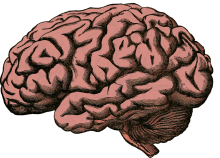
Naaem Simaan, Fadi Shbat: Characteristics of patients with cerebral sinus venous thrombosis and JAK2 V617F mutation (Acta Neurol Belg . )
Janus kinase 2 (JAK2-V617F) mutations can cause thrombocytosis, polycythemia and hyper viscosity leading to cerebral sinus venous thrombosis (CSVT). However, data regarding the characteristics and prevalence of JAK2-V617F mutation in patients with CSVT are currently lacking. We aimed to evaluate the characteristics of CSVT patients that carry the JAK2 mutation.

Liora Livshitz, Tsafrir Or: The effects of a multi-day cross-country mountain bike race on myocardial function, stress, inflammation and cardiac biomarkers in amateur master athletes (Res Sports Med . )
This study aimed to examine the effects of a multi-day mountain bike race on amateur master athlete cyclists (AMA).

Johnny S Younis: Is ovarian reserve reduction following endometriotic cystectomy predicted? The implication for fertility preservation counseling (Front Endocrinol (Lausanne) . )
Ovarian reserve depletion secondary to an intact endometrioma continues to be actively debated and has been recently challenged. Conversely, endometriotic cyst surgery, specifically endometriotic ovarian cystectomy, seems to have an irreversible damaging impact and is of concern for women and practitioners alike. Past histological studies have demonstrated inadvertent primordial follicle removal adjacent to the endometrioma, which seems inevitable even in experienced hands. Furthermore, well-performed systematic reviews and meta-analyses have resulted in a significant irreversible reduction in serum AMH levels, suggesting potentially lasting damage to the reproductive life span.



